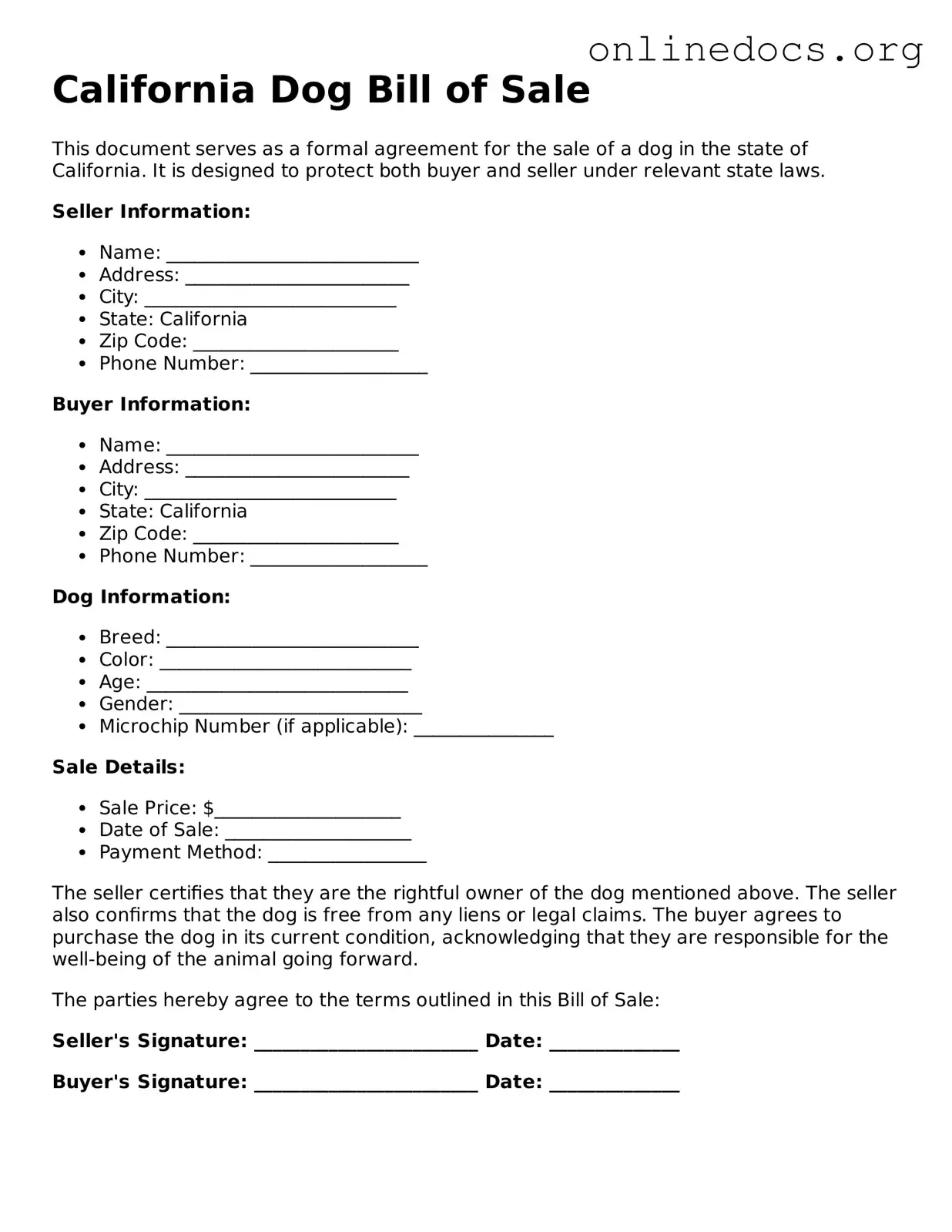The California Dog Bill of Sale form shares similarities with the Vehicle Bill of Sale. Both documents serve as a formal record of the transfer of ownership from one party to another. In the case of a vehicle, this document details the make, model, year, and Vehicle Identification Number (VIN). Similarly, the Dog Bill of Sale includes specific information about the dog, such as breed, age, and any identifying features. Both forms provide essential details that protect the interests of both the seller and the buyer, ensuring clarity in the transaction.
Another document akin to the Dog Bill of Sale is the Pet Adoption Agreement. This agreement is often used by shelters and rescue organizations when rehoming animals. Like the Dog Bill of Sale, it outlines the responsibilities of the new owner and may include information about the pet’s health and behavior. Both documents emphasize the importance of responsible pet ownership and may include clauses that address the pet’s welfare and the obligations of the new owner.
The Lease Agreement for pets is also comparable. This document outlines the terms under which a pet can reside in a rental property. It often includes stipulations about pet deposits, pet behavior, and responsibilities for damages. While the Dog Bill of Sale focuses on ownership transfer, the Lease Agreement ensures that pet owners understand their obligations while living in a rented space. Both documents aim to protect the rights of all parties involved.
A similar document is the Animal Care Agreement. This agreement is often used in situations where someone is temporarily caring for a pet. It specifies the responsibilities of the caretaker, including feeding, grooming, and medical care. The Dog Bill of Sale, while focused on ownership, also underscores the importance of care and responsibility for the animal. Both documents help clarify expectations and ensure that the animal’s needs are met.
The Bill of Sale for livestock is another related document. This form is used for the sale and transfer of ownership of farm animals, such as cows, pigs, and sheep. Much like the Dog Bill of Sale, it includes details about the animal being sold, such as breed, age, and health status. Both documents serve to protect the seller and buyer by providing a clear record of the transaction and the condition of the animal at the time of sale.
For those engaged in transactions involving personal property, utilizing a Bill of Sale form is essential, ensuring that both parties have a clear record of ownership transfer. This document not only aids in delineating the specifics of the property being sold but also enhances the legal protection for both the buyer and seller by documenting the terms of the sale.
Lastly, the Breeder's Sales Agreement is similar in purpose to the Dog Bill of Sale. This document is used by breeders when selling puppies or kittens. It outlines the terms of sale, health guarantees, and responsibilities for both the breeder and the buyer. Like the Dog Bill of Sale, it emphasizes the importance of ethical breeding practices and responsible ownership. Both documents aim to ensure that the animal is placed in a suitable home while protecting the interests of the seller.
